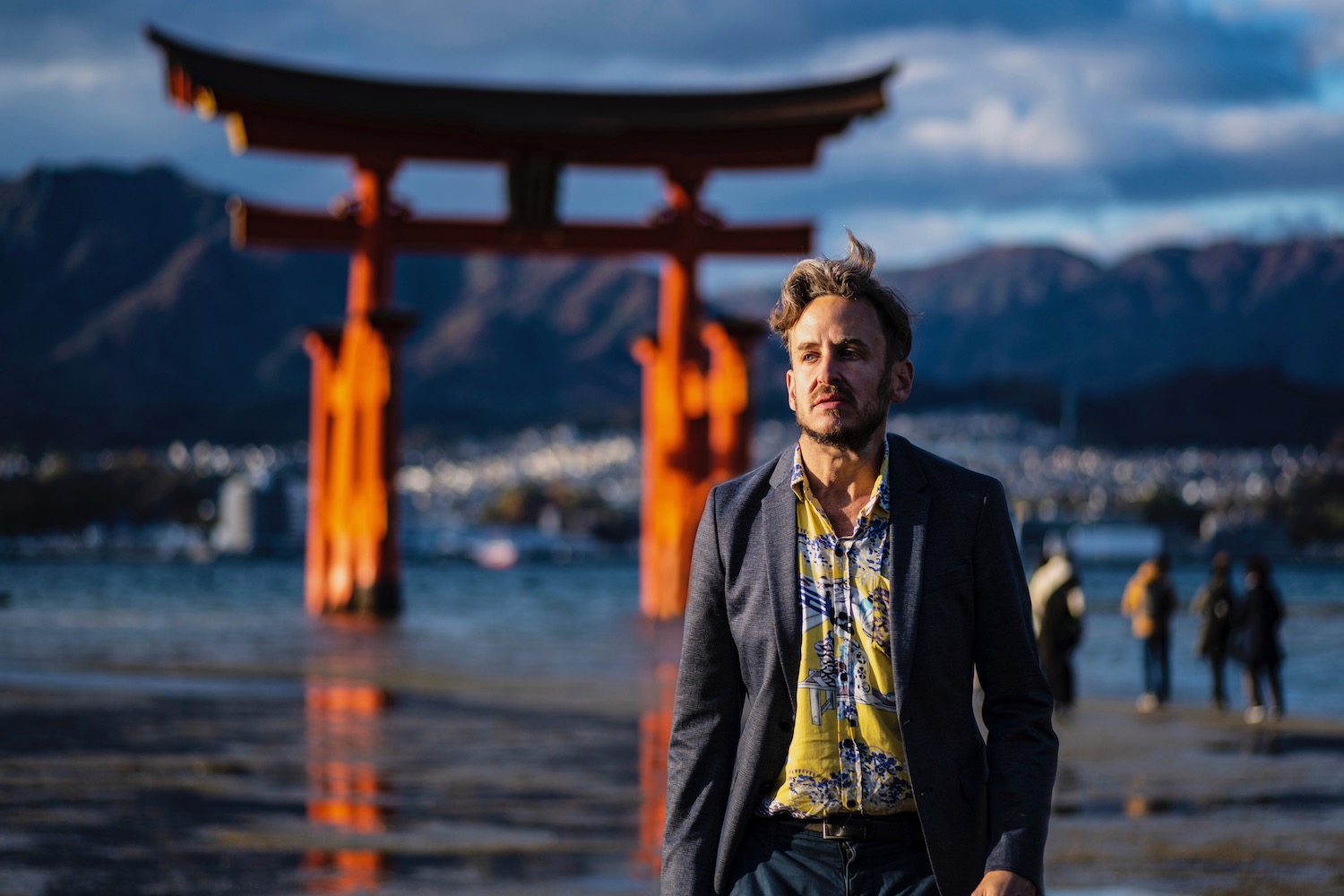Miyajima was one of the first places in Japan that took my breath away, on my first trip to the country nearly a decade ago. I’d come on a day trip from Hiroshima not really knowing what to expect, and left with the curiosity and excitement that would lead me to create this site four years later.
When I say “Miyajima,” mind you, I’m really referring to the floating torii gate of Itsukushima Shrine, which appears to float in the waters of the Seto Inland Sea just north of the island. This is the spot most tourists are referring to, when they say they want to visit Miyajima.
Beautiful as it is, the gate isn’t all the makes Miyajima worth visiting. (Although, in the interest of transparency, I should note that I personally abstained from coming back during the years it was covered by scaffolding during a protracted renovation.)
The Truth About Japan’s “Floating” Gate
I have to start with some bad news: The torii of Itsukushima Shrine isn’t actually floating. If it was, there would be nothing to hold it in place, and it would drift off into the Seto Inland Sea (and, eventually, out to the Pacific) never to be seen again. Rather, it is anchored into the sea bed just off Miyajima Island, where the daily high tide causes it to appear as if it’s suspended in the water.
The good news, of course, is that when you photograph it from the shore (or, if you come during low tide, when you walk out into the bay and get close to the shrine legs), it certainly does appear to be floating, which is really all that matters. The effect is especially awesome at night, when the gate lights up and its reflection also appears to “float.”
What to Do in Miyajima
Admire Itsukushima Shrine
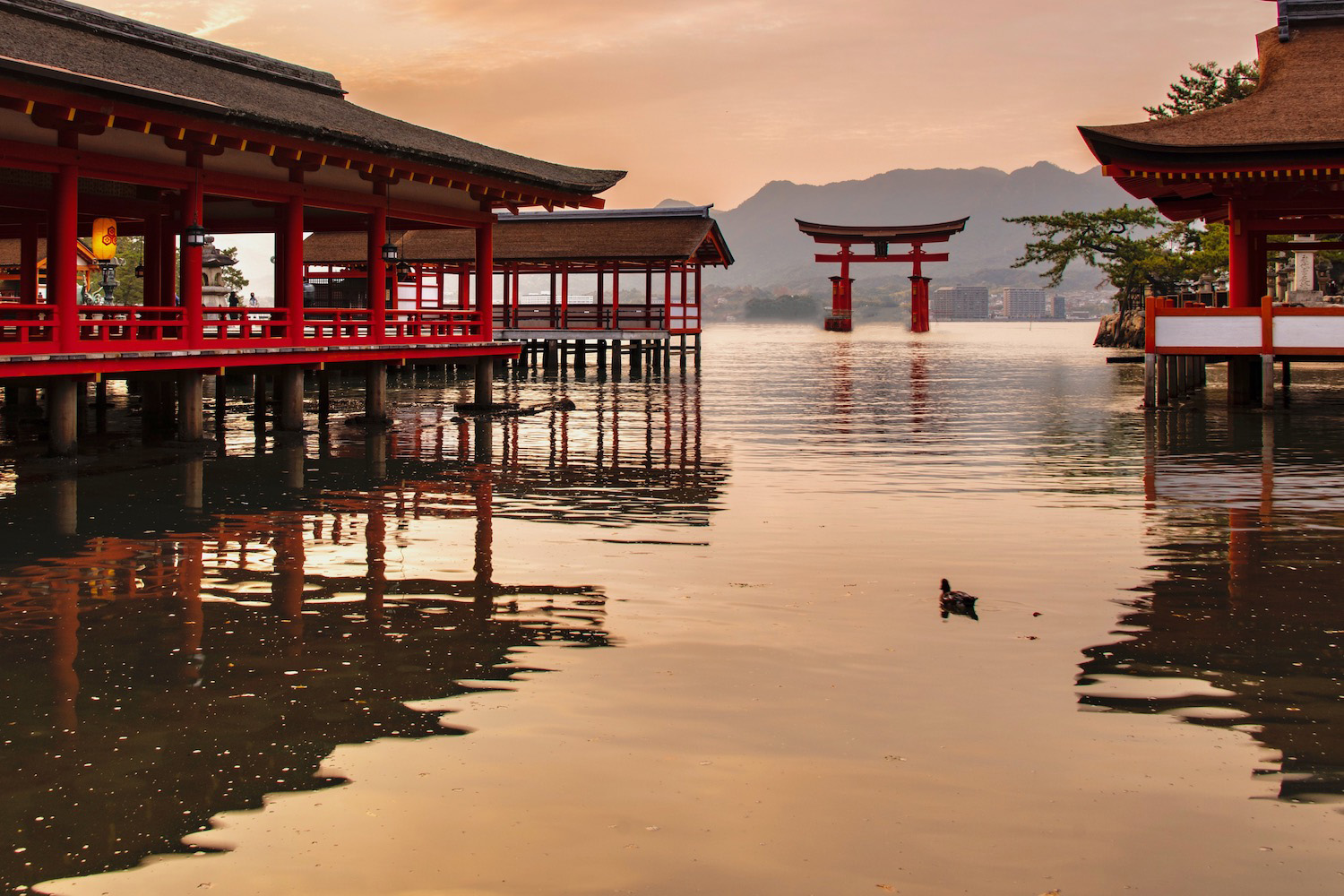
“Floating” or not, the famous gate of Miyajima is the first thing you’ll see when boarding the ferry, and the last place you’ll stop before heading back to the mainland. With this in mind, I do think it’s worth paying the small fee to the entire the grounds of the onshore portion of the shrine, if only because of how beautifully it frames the torii.
Feed (or run from) the deer
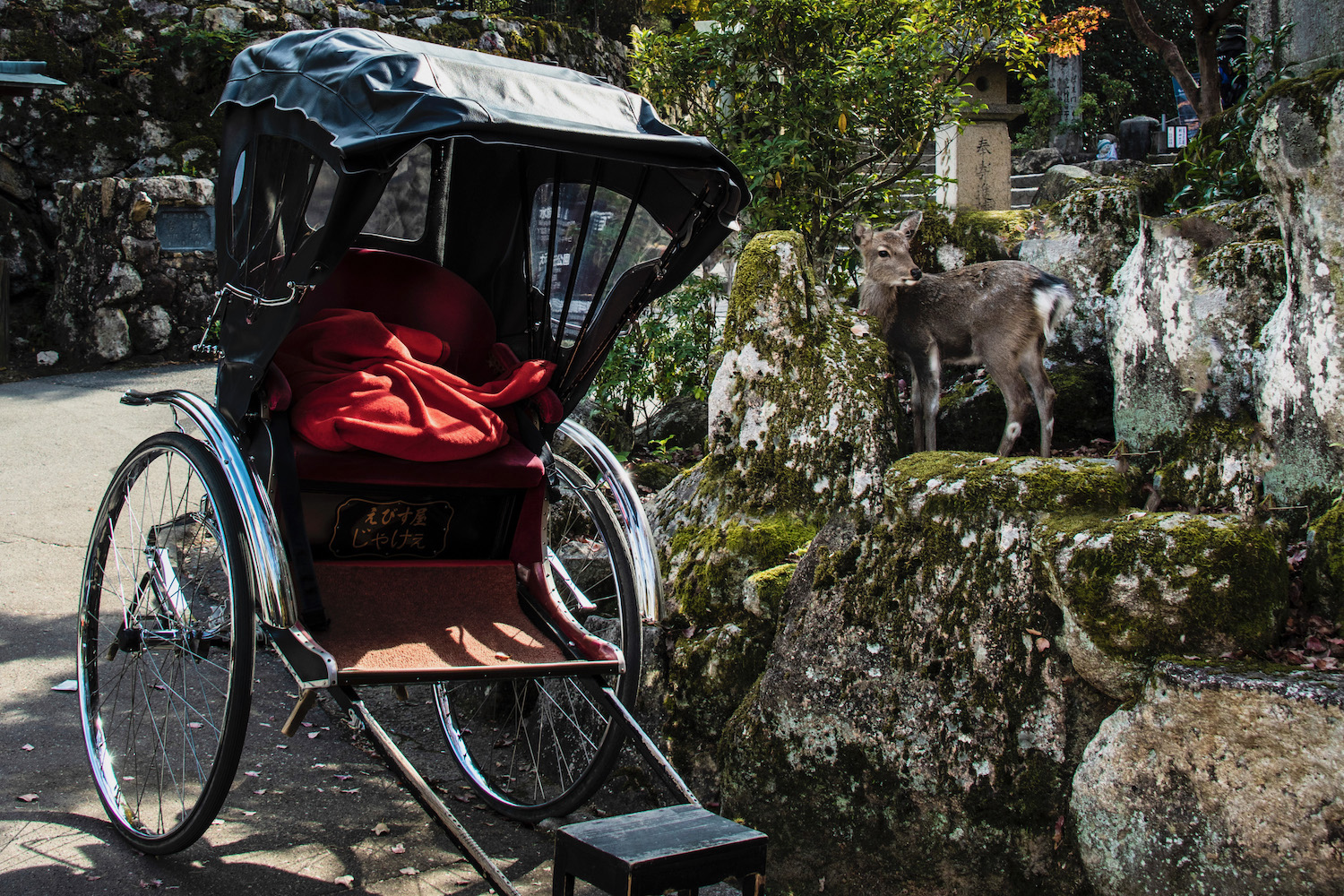
I’ll be honest: The shika (deer) popular is not really part of what makes Miyajima worth visiting for me—it’s not an animal I’m especially fond of. With this being said, they are a popular draw for other travelers, although you have to be careful. “Deer food” isn’t as ubiquitous here as it is in Nara, which means the deer will come for your lunch or snack!
Enjoy seasonal spectacles
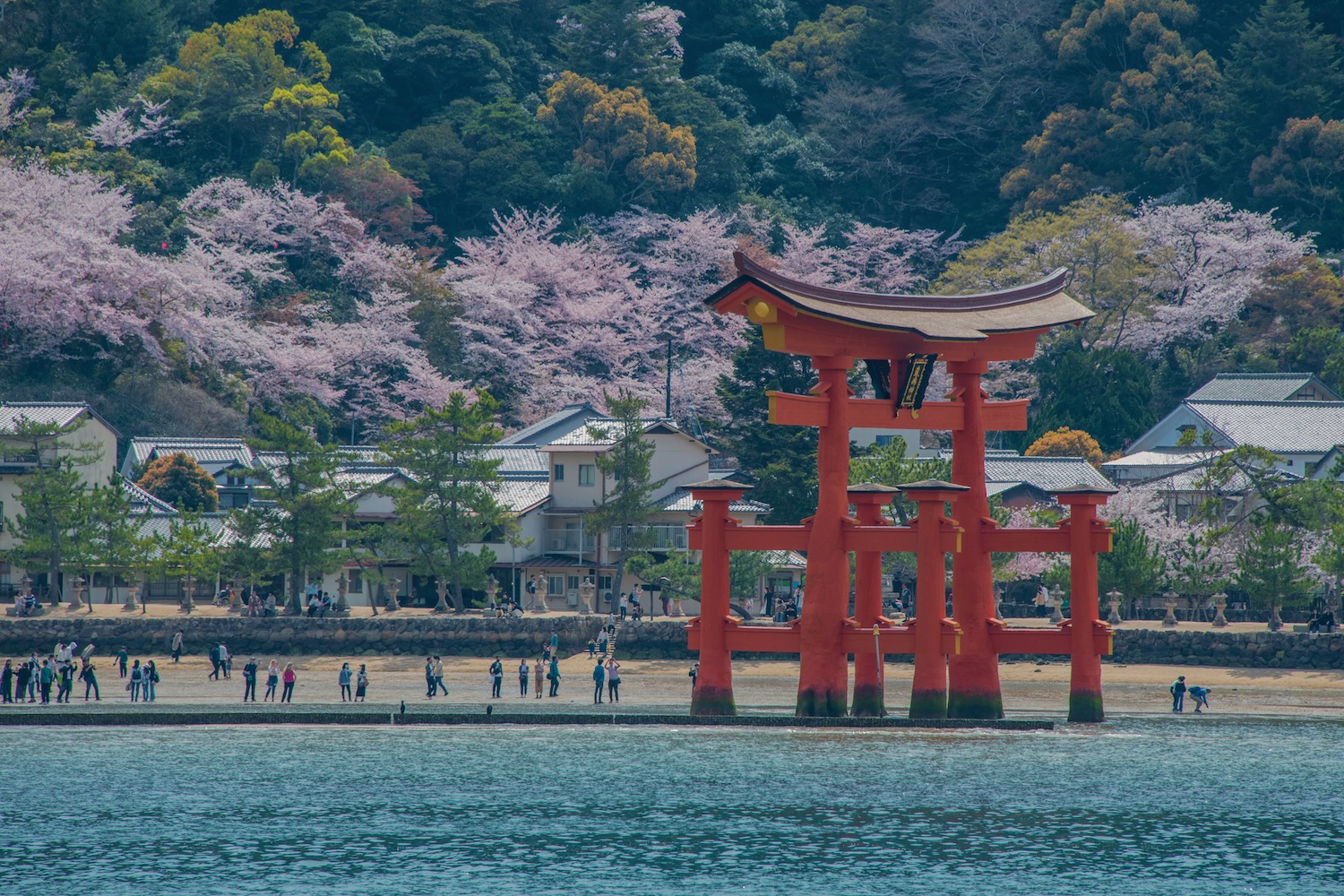
Miyajima is beautiful any time of year, but the spring and autumn are especially nice. In spring, do make sure to hike up to the Tahoto two-tiered pagoda just up the hill west of the shrine. If the cherry blossoms are at their peak (usually sometime during the first week of April), they’ll perfectly frame the torii. In the fall, the island has a nice mix of red momiji maple trees and yellow ginkgoes.
Eat fresh oysters
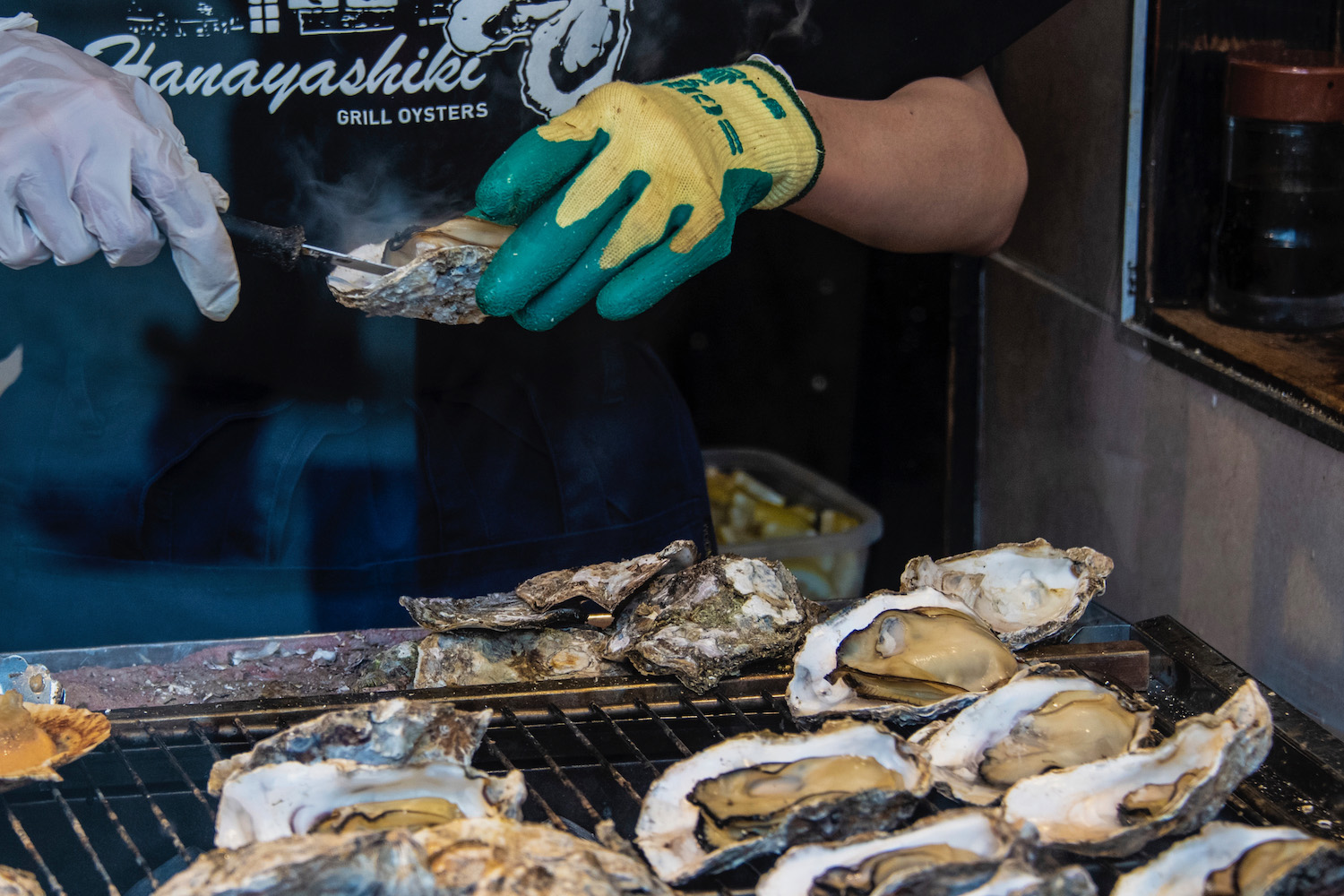
Cuisine is a huge part of why I’m adamant Miyajima is worth visiting, although many travelers miss it. The highlight is yaki-gaki or grilled oysters, which are caught fresh in the waters of the Seto Inland Sea just offshore. Another highlight of eating in Miyajima? The fact that since the covid-19 pandemic, to-go alcohol is now available at shops around the island!
See it all from above
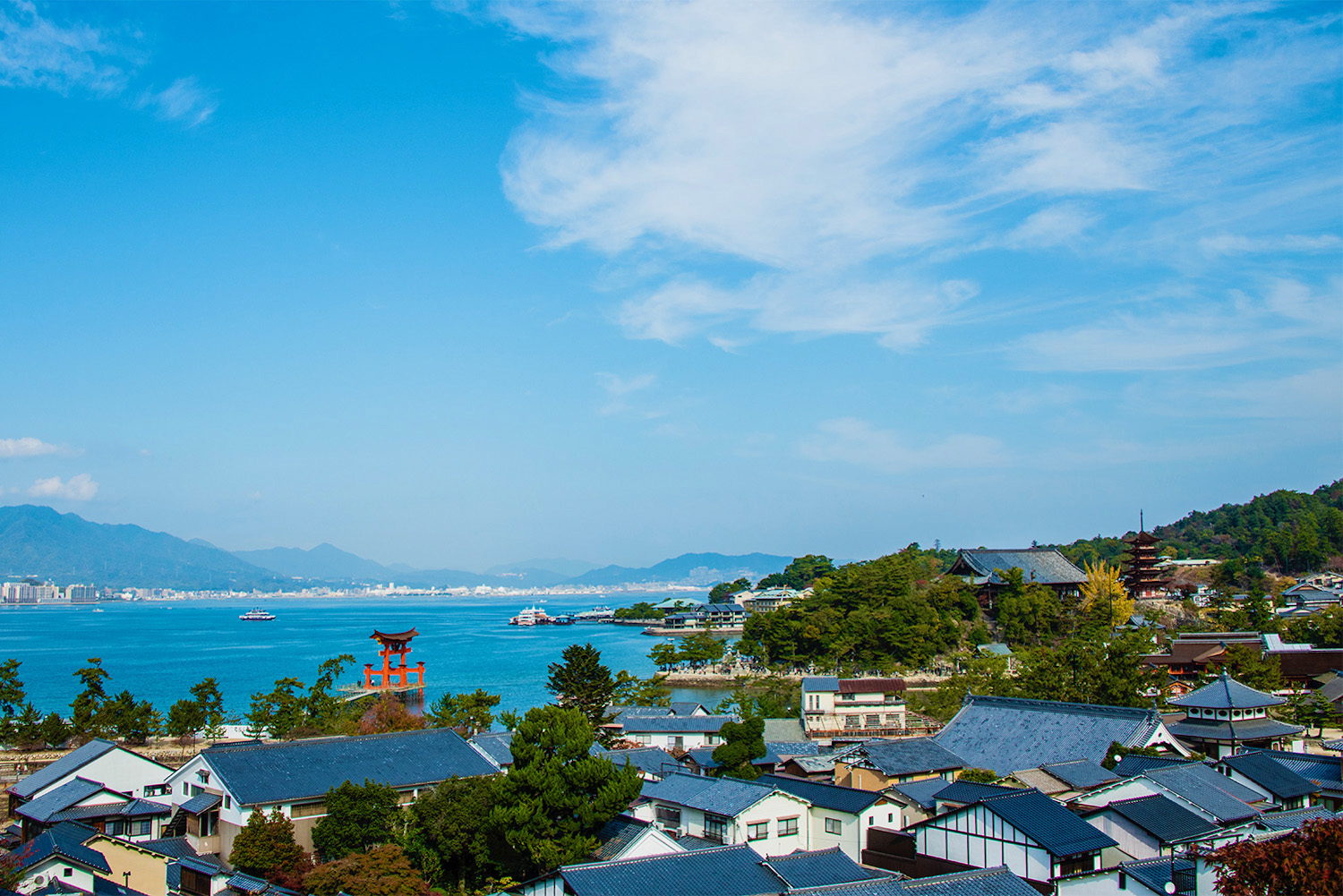
I already mentioned Tahoto pagoda as an option for getting a bird’s eye view of Miyajima. If you’re so inclined you can also ride the Mt. Misen Ropeway to—wait for it—Mt. Misen, although the view from up there is a little “big” if you know what I mean. You get some great Setouchi scenery, to be sure, but you can’t actually see the floating torii below.
How to Get to Miyajima
Miyajima is easy to access, particularly if you’re already in Hiroshima (if you’re not, get there!). From Hiroshima Station, you will want to ride the JR Sanyo Line to Miyajimaguchi station, then follow the signs to the JR Ferry, which will take you over to the island. Conveniently, if you have a Japan Rail Pass, your entire journey to Miyajima is covered!
As far as how to get to the Japan floating torii gate once you’re on Miyajima, it’s pretty easy. Just hang a right when you exit the ferry station and follow the path along the coast. Assuming, of course, you want to go directly to the gate. You could instead head into Miyajima’s town center and sit down for a meal, pick up a to-go beverage (including alcohol) or take the Mt. Misen Ropeway.

Other FAQ About Visiting Miyajima
Why is Miyajima famous?
Miyajima island is famous primarily due to the “floating” torii gate of Itsukushima Shrine. Its proximity to Hiroshima makes it a popular day trip from the city, which is itself one of the top destinations people visit when traveling in Japan.
Can you do Hiroshima and Miyajima in a day?
You can absolutely do Hiroshima and Miyajima in a day. I’d probably recommend spending the morning in Hiroshima city, walking from the station to Shukkei-en garden and Hiroshima Castle before arriving at the A-Bomb Dome and Peace Memorial. Have an okonomiyaki lunch, then ride a tram back to Hiroshima Station, ride the JR Sanyo Line to Miyajimaguchi and take the ferry over to the island.
How long is the ferry from Hiroshima to Miyajima?
Riding the ferry from Miyajimaguchi over to Miyajima island only takes about 10-15 minutes. Keep in mind, however, that the train from JR Hiroshima Station to Miyajimaguchi will add about 20 minutes to your trip. Additionally, you may need to wait as long as 15 minutes for the departure of the ferry.
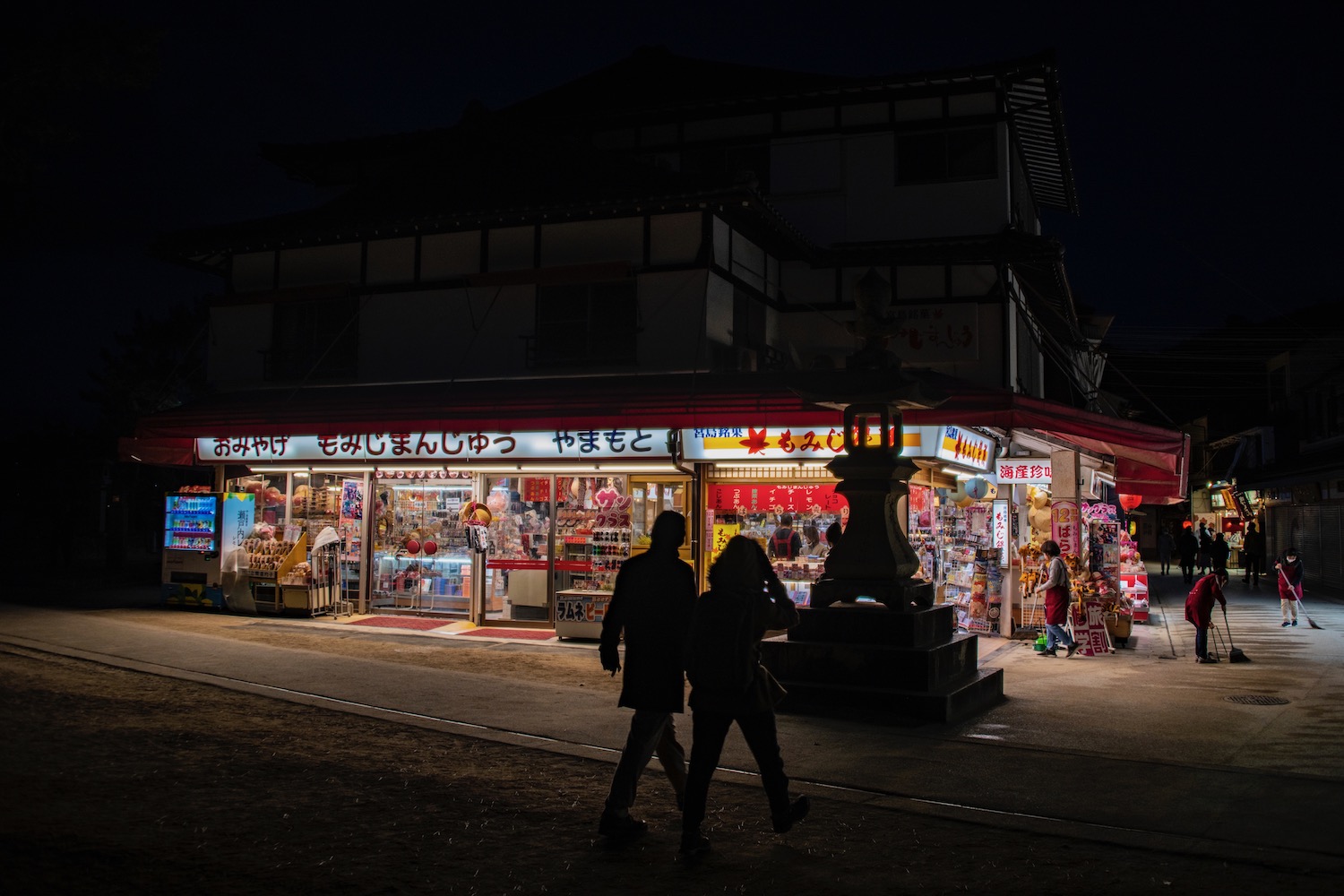
The Bottom Line
Is Miyajima worth visiting? Absolutely, especially if you spend enough time here to see the island’s treasures beyond its most obvious one. Take some time to play with—or taunt—the local population of deer, walk (or ride a ropeway) to one of the island’s many viewpoints or sit down to ensure fresh-caught local oysters grilled to perfection. Spend the whole day in Miyajima, if you can! Indeed, while many travelers simply come over for the afternoon and watch the sunset behind Itsukushima Shrine’s famous “floating” gate, Miyajima is ultimately as amazing as the time you devote to it. Make sure your entire Japan trip is one for the record books—hire me to plan it.



